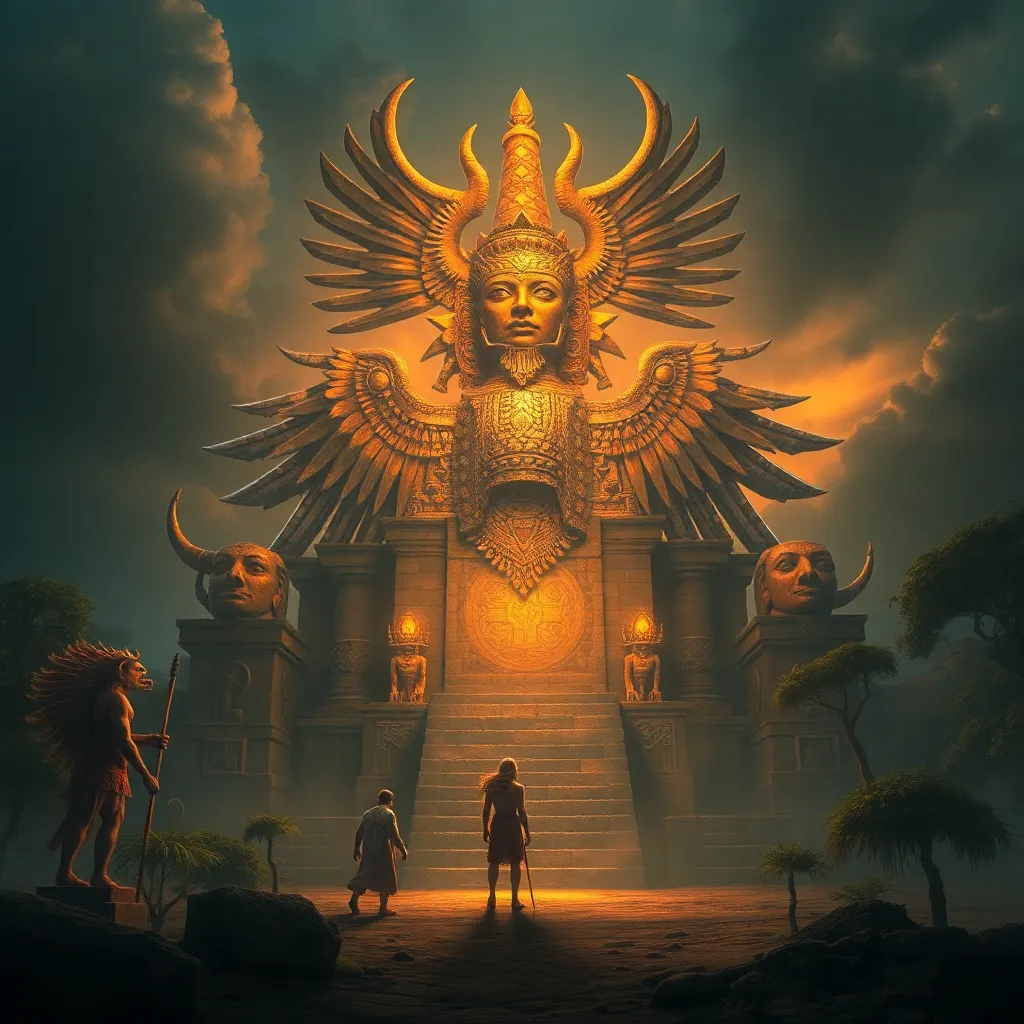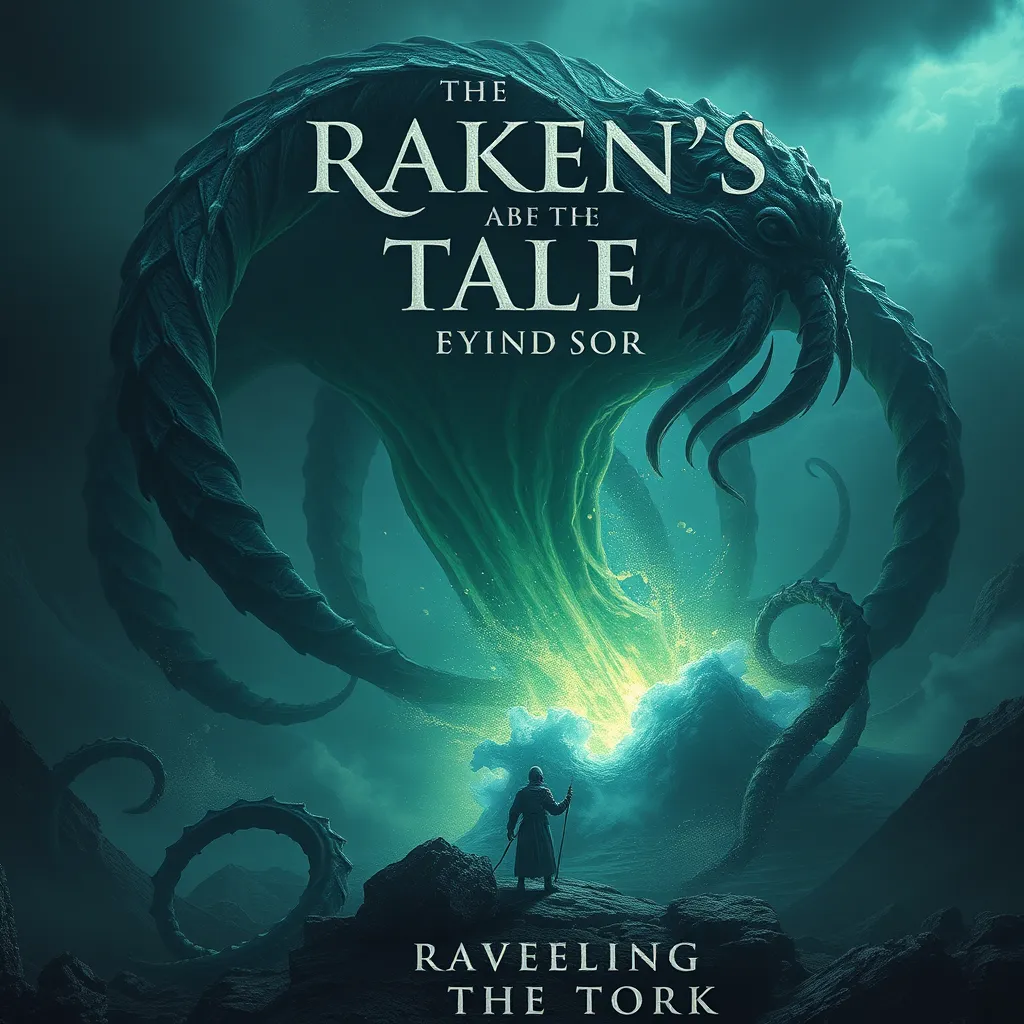Itzamná’s Legacy: The Influence of Mayan Mythology on Mesoamerican Cultures
I. Introduction
Itzamná is one of the most significant deities in Mayan mythology, revered as a creator god and a symbol of wisdom and knowledge. His influence permeated various aspects of Mayan life, from religion to governance, and even the arts. The importance of mythology in shaping Mesoamerican cultures cannot be overstated, as these stories provided a framework for understanding the world, guiding moral conduct, and informing rituals. This article explores Itzamná’s role in Mayan cosmology, the myths surrounding him, his influence on art and architecture, and the ongoing legacy of his mythology in contemporary cultures.
II. The Role of Itzamná in Mayan Cosmology
Itzamná is often recognized as a creator deity in Mayan cosmology. He is associated with the sky, the sun, and the heavens, playing a pivotal role in the creation of the world and humanity. His attributes include wisdom, knowledge, and the power to bring life and order to the universe.
A. Itzamná as a creator deity
As a creator god, Itzamná is credited with various acts of creation, including the formation of the Earth and the establishment of agricultural cycles. He is often depicted as a benevolent figure who nurtures and guides humanity.
B. Symbolism and attributes associated with Itzamná
Itzamná is often symbolized by the owl, representing wisdom, and is associated with various elements of nature, including water and maize. His dual nature as both a kind creator and a fierce protector reflects the complexities of the natural world.
C. Itzamná’s relationship with other deities
Itzamná functions within a broader pantheon of Mayan deities, including his wife Ix Chel, the goddess of fertility, and other gods representing various aspects of life and nature. The interactions and relationships among these deities illustrate the interconnectedness of all aspects of life in Mayan belief systems.
III. Myths and Legends of Itzamná
The myths surrounding Itzamná are rich and varied, often conveying moral lessons and cultural values. Key stories include his role in the creation of humans and the establishment of agricultural practices.
A. Key myths involving Itzamná
One significant myth tells of Itzamná creating humanity from maize, emphasizing the importance of this crop in Mayan society. Another story describes how he brought knowledge and civilization to the people, teaching them the arts of writing, medicine, and astronomy.
B. The significance of these stories in Mayan society
These myths served not only as religious narratives but also as foundational stories that helped shape Mayan identity. They provided explanations for natural phenomena and societal structures, reinforcing cultural values and practices.
C. Comparisons to other creation myths in Mesoamerica
Itzamná’s myths share similarities with other Mesoamerican creation stories, such as those of the Aztecs and Olmecs, highlighting common themes of creation, agricultural importance, and the role of deities in human affairs.
IV. Itzamná’s Influence on Art and Architecture
Itzamná’s presence is vividly felt in Mayan art and architecture, where he is often depicted in various forms.
A. Representation of Itzamná in Mayan art
Artistic representations of Itzamná can be found in pottery, murals, and carvings. He is frequently illustrated with attributes such as the owl and the codex, symbolizing his wisdom and knowledge.
B. Architectural elements inspired by Itzamná
Many structures, such as temples and ceremonial centers, incorporated elements that honor Itzamná. The designs often reflect cosmological concepts, with alignments that correspond to celestial events.
C. Influence on other Mesoamerican cultures’ artistic expressions
Itzamná’s influence extended beyond the Mayans, inspiring artistic traditions in neighboring cultures. His attributes and stories were often adapted and integrated into the art of other Mesoamerican civilizations.
V. The Impact of Itzamná on Rituals and Ceremonies
Rituals dedicated to Itzamná played a crucial role in Mayan religious practices, reflecting the deep-seated beliefs about creation and the natural order.
A. Ritual practices dedicated to Itzamná
Various rituals were performed to honor Itzamná, including offerings of food, incense, and ceremonial dances. These practices were believed to ensure divine favor and agricultural prosperity.
B. The role of mythology in Mesoamerican religious ceremonies
Mythology served as a guiding framework for religious ceremonies, providing narratives that shaped the rituals’ meaning and significance.
C. Continuities and changes in rituals over time
While many rituals have persisted through the centuries, some have evolved or blended with other cultural practices, particularly during the colonial period, resulting in unique syncretic traditions.
VI. Itzamná’s Legacy in Language and Literature
The legacy of Itzamná extends into contemporary language and literature, where his influence is still palpable.
A. Linguistic traces of Itzamná in modern Mayan languages
Many modern Mayan languages contain vocabulary and expressions that trace back to Itzamná, reflecting the enduring impact of his mythology.
B. Influence on Mesoamerican literature and oral traditions
Stories of Itzamná have been preserved in oral traditions and literature, showcasing the significance of his narratives in cultural identity and continuity.
C. The preservation of Itzamná’s stories through generations
The oral transmission of stories about Itzamná has been instrumental in keeping Mayan culture alive, ensuring that new generations understand their historical and mythological heritage.
VII. Cross-Cultural Connections and Adaptations
Itzamná’s influence transcended the Mayan civilization, impacting neighboring cultures in various ways.
A. How Itzamná’s influence spread to neighboring cultures
The myths and attributes of Itzamná were absorbed and adapted by other Mesoamerican societies, reflecting regional interactions and cultural exchanges.
B. Adaptations and reinterpretations of Itzamná in other Mesoamerican societies
Other cultures, such as the Aztecs, reinterpreted aspects of Itzamná while integrating them into their pantheon, showcasing the flexibility of Mesoamerican mythology.
C. Case studies of specific cultures influenced by Itzamná
Specific examples include the incorporation of Itzamná-like figures in Aztec mythology and adaptations found in the Mixtec and Zapotec cultures, where creation myths echo similar themes.
VIII. Conclusion
In summary, Itzamná’s enduring legacy is a testament to the profound impact of Mayan mythology on Mesoamerican cultures. His stories, attributes, and rituals continue to resonate in both historical and contemporary contexts, highlighting the relevance of these ancient narratives in today’s world. The preservation and study of Itzamná and other mythological traditions are essential for understanding the rich tapestry of Mesoamerican heritage.
The relevance of Mayan mythology in contemporary Mesoamerican cultures is evident in the ongoing practices and beliefs that honor these ancient traditions. As we delve into these mythological narratives, we not only gain insight into the past but also recognize their importance in shaping cultural identities today.
Final thoughts on the importance of preserving and studying these mythological traditions emphasize the need for cultural heritage conservation, ensuring that future generations can appreciate and learn from the rich history and wisdom embedded in these stories.



